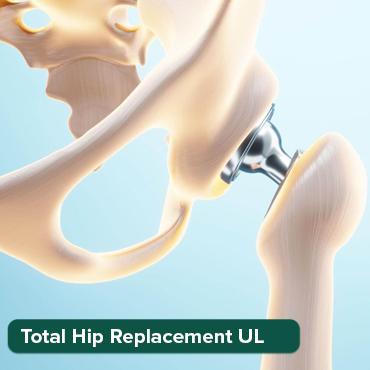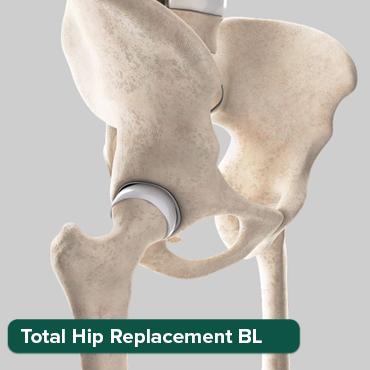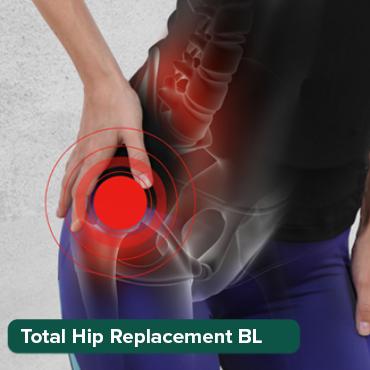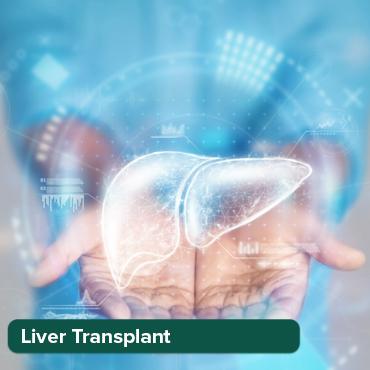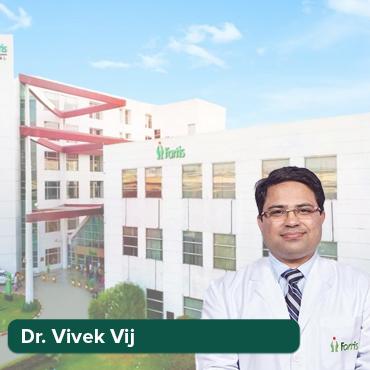
Surgical Options for Cancer Treatment in the UAE
17 Jul, 2024
 Healthtrip Team
Healthtrip TeamFacing a cancer diagnosis is daunting, but in the UAE, patients have access to advanced surgical options that offer hope and effective treatment. With various types of cancer requiring specialized surgical interventions, finding the right approach and hospital becomes crucial for optimal outcomes. This guide explores the leading surgical treatments available in the UAE, highlighting top hospitals renowned for their expertise in oncology surgery.
Most popular procedures in India
Surgical Options for Cancer Treatment in the UAE
A. Minimally Invasive Surgery (MIS)
Minimally Invasive Surgery (MIS) represents a significant advancement in the field of surgical oncology, offering patients less traumatic alternatives to traditional open surgery. In the UAE, MIS techniques are widely adopted due to their numerous benefits, including smaller incisions, reduced pain, quicker recovery times, and lower risk of complications. Here are two prominent types of MIS used for cancer treatment:
1. Laparoscopic Surgery
Laparoscopic surgery involves the use of a laparoscope—a long, thin tube equipped with high-intensity light and a high-resolution camera at the front. The camera transmits images to a monitor, allowing the surgeon to see inside the patient’s body in real time.
Wellness Treatments
Give yourself the time to relax
Lowest Prices Guaranteed!

Lowest Prices Guaranteed!
Laparoscopic Surgery Procedure
1. Incisions: Small incisions, typically 0.5-1 cm in size, are made in the abdominal or pelvic region at strategic locations.
2. Insertion of Trocar: A trocar, a specialized surgical instrument, is carefully inserted through each incision. Trocars serve as entry ports for the laparoscope and other surgical instruments.
3. Gas Insufflation: Carbon dioxide gas is gently pumped into the abdominal cavity through one of the trocars. This insufflation process creates a working space by lifting the abdominal wall away from the organs. It also improves visibility by reducing tissue obstruction.
4. Laparoscope and Instruments: The laparoscope, a thin tube with a high-resolution camera and light source, is inserted through one of the trocars. The camera transmits real-time images of the internal organs and the surgical field to a monitor, allowing the surgical team to visualize the procedure in detail. Additional surgical instruments, such as graspers, scissors, or electrocautery devices, are inserted through the remaining trocars. These instruments are manipulated by the surgeon to perform the necessary procedures.
5. Tumor Removal: Using the laparoscopic instruments, the surgeon carefully manipulates and removes the tumour. The camera on the laparoscope provides a magnified and illuminated view of the operative site, aiding in precision and ensuring that surrounding healthy tissues are preserved.
6. Closure: After completing the tumour removal and any additional procedures, the surgical instruments are withdrawn, and the trocars are removed. Depending on the number and size of incisions, they may be closed with sutures or covered with small adhesive bandages.
7. Postoperative Care: Patients are monitored closely in the recovery area to ensure stable vital signs and to manage any immediate postoperative discomfort. Recovery typically involves minimal scarring, reduced pain, and shorter hospital stays compared to traditional open surgery.
Applications:
- Colorectal Cancer: Laparoscopic surgery is frequently used for the resection of colorectal tumours. It allows for precise removal of the affected colon or rectal segments with minimal damage to surrounding tissues.
- Gastric Cancer: This technique is employed for partial or total gastrectomies, where part or all of the stomach is removed.
- Gynecologic Cancers: Commonly used for the treatment of ovarian, uterine, and cervical cancers. It enables the removal of tumours while preserving reproductive organs when possible.
2. Robotic-Assisted Surgery
Robotic-assisted surgery leverages advanced robotic systems to enhance the precision, flexibility, and control of surgical procedures. The surgeon operates the robotic system from a console, using controls to manoeuvre the robotic arms equipped with surgical instruments.
Robotic-Assisted Surgery Procedure
1. Setup: Similar to laparoscopic surgery, small incisions (typically 0.5-1 cm) are made in the abdominal or pelvic region at strategic locations. Trocars, specialized surgical ports, are inserted through these incisions to provide access to the surgical site.
2. Robotic System Docking: Robotic arms, each equipped with different surgical instruments including cameras, scalpels, and forceps, are docked to the trocars. The robotic system is calibrated to ensure precise alignment and functionality during the procedure.
3. Surgeon Control: The surgeon sits at a console located away from the operating table, typically in the same operating room but separated from the patient. The console provides a 3D high-definition view of the surgical site, enhanced with magnification and clarity beyond what is visible to the naked eye.
4. Instrument Manipulation: Using hand controllers and foot pedals at the console, the surgeon manoeuvres and controls the robotic instruments. The surgeon's hand movements are translated into precise movements of the robotic instruments inside the patient's body. The robotic system filters out hand tremors, allowing for steady and accurate actions even during delicate manoeuvres.
5. Tumor Removal: The robotic arms offer enhanced flexibility, rotation, and articulation capabilities that exceed human dexterity. This enables precise manipulation and removal of tumours located in challenging or hard-to-reach areas within the abdominal or pelvic cavities. The high-definition cameras provide detailed visualization, ensuring that the surgeon can accurately identify and safely remove the tumour while minimizing damage to surrounding healthy tissue.
6. Closure: After completing the surgical procedure, the robotic instruments are carefully withdrawn from the patient's body. The small incisions used for trocars may be closed with sutures or covered with adhesive bandages, depending on the surgeon's preference and the size of the incisions.
7. Postoperative Care: Patients are monitored closely in the recovery area to assess their condition and manage any postoperative discomfort. Robotic-assisted surgery often leads to shorter hospital stays, reduced pain, and quicker recovery times compared to traditional open surgery methods.
Applications:
- Prostate Cancer: Robotic-assisted prostatectomies are commonly used, offering enhanced precision in removing the prostate gland while sparing surrounding nerves and tissues.
- Kidney Cancer: This technique is used for partial or radical nephrectomies, allowing for the precise removal of cancerous tissues while preserving kidney function.
- Gynecologic Cancers: Used for hysterectomies, oophorectomies, and other complex procedures, it enhances the surgeon’s ability to perform delicate operations with precision.
Minimally Invasive Surgery (MIS), encompassing laparoscopic and robotic-assisted techniques, offers substantial advantages in cancer treatment. These advanced surgical options, widely available in leading hospitals across the UAE, enhance the precision and effectiveness of cancer surgeries while minimizing patient discomfort and recovery time. As technology continues to evolve, MIS will likely play an even more critical role in the comprehensive care and treatment of cancer patients.
2. Open Surgery
3. Cryosurgery
Cryosurgery, also known as cryotherapy or cryoablation, is an innovative technique used in the treatment of certain cancers, leveraging extreme cold to destroy cancerous tissues. This method has gained popularity in the UAE and worldwide due to its minimally invasive nature and effectiveness in targeting tumours that are difficult to reach with traditional surgery. Here's an in-depth look at how cryosurgery is applied in cancer treatment:
Cryosurgery involves the application of extremely cold temperatures to freeze and destroy abnormal tissues, including cancerous cells. Liquid nitrogen or argon gas is commonly used as the freezing agent, creating ice crystals within the cancer cells and leading to their destruction.
Cryosurgery Procedure:
1. Preparation: The patient is typically given local or general anaesthesia, depending on the location and size of the tumour.
2. Guidance: Imaging techniques such as ultrasound, MRI, or CT scan may be used to guide the placement of cryoprobes (thin, hollow needles) directly into the tumour.
3. Freezing Process: Liquid nitrogen or argon gas is circulated through the cryoprobes, causing the temperature around the probes to drop significantly.
4. Ice Formation: As the temperature drops, ice forms both inside and around the cancer cells, leading to cellular destruction through mechanisms like direct ice crystal formation and disruption of cell membranes.
5. Thawing Cycle: The frozen tissue is allowed to thaw, and the process may be repeated to ensure thorough destruction of the tumour.
6. Monitoring: The procedure is monitored closely using imaging techniques to ensure accurate targeting and complete treatment of the cancerous tissue.
Applications:
- Prostate Cancer: Cryosurgery is often used as an alternative treatment for localized prostate cancer, particularly for patients who cannot undergo traditional surgery or radiation therapy.
- Liver Cancer: It is used for small liver tumours that are not amenable to surgical resection or other treatments. Cryosurgery can effectively target and destroy these tumours while preserving more healthy liver tissue.
- Skin Cancer: Basal cell carcinomas and certain types of superficial skin cancers can be treated with cryosurgery, offering a non-surgical option with minimal scarring.
Cryosurgery represents a valuable option in the armamentarium of cancer treatment, particularly for tumours that are difficult to treat using traditional surgery or radiation therapy. In the UAE, this technique is utilized in leading healthcare facilities to provide patients with effective, minimally invasive treatment options tailored to their specific cancer diagnoses.
5. Mohs Surgery
Mohs surgery is a highly specialized technique primarily used for the treatment of skin cancer, particularly basal cell carcinoma and squamous cell carcinoma. It is renowned for its meticulous approach to ensuring the complete removal of cancerous tissue while sparing healthy surrounding tissue. This procedure is particularly favoured for cancers located in sensitive or cosmetically important areas where preserving as much healthy tissue as possible is crucial.
Mohs surgery, named after its inventor Dr. Frederic Mohs, is an advanced surgical procedure designed to remove skin cancers layer by layer. Each layer of tissue removed is immediately examined under a microscope by the surgeon. This process allows for precise identification and removal of cancer cells while minimizing the removal of healthy tissue.
Mohs Surgery Procedure:
1. Local Anesthesia: The procedure begins with the administration of local anaesthesia to numb the area around the tumour, ensuring the patient's comfort during the surgery.
2. Initial Tumor Removal: Using a scalpel, the visible portion of the tumour is surgically removed along with a thin layer of surrounding tissue. This initial excision aims to eliminate the visible part of the tumour.
3. Mapping and Processing: The removed tissue is meticulously mapped and divided into sections. Each section is then frozen, thinly sliced, and stained for examination under a microscope.
4. Microscopic Examination: The surgeon carefully examines each slide under a microscope to identify any remaining cancer cells. This step is crucial in determining the extent of tumour involvement and ensuring that no cancerous tissue is left behind.
5. Layer-by-Layer Removal: If cancer cells are still present in certain sections, another layer of tissue is precisely removed from the corresponding area. The tissue removal and microscopic examination process is repeated layer by layer until no cancer cells are detected in the examined tissue.
6. Closure: Once all cancer cells are completely removed, the wound is typically closed with sutures or other closure techniques. Special care is taken to ensure the wound closure preserves the natural function and cosmetic appearance of the area.
Applications:
- Basal Cell Carcinoma: Mohs surgery is highly effective in treating basal cell carcinoma, which is the most common type of skin cancer.
- Squamous Cell Carcinoma: It is also used for squamous cell carcinoma, particularly in cases where the cancerous growth is large, aggressive, or located in cosmetically sensitive areas.
- Other Skin Cancers: Mohs surgery may be considered for other types of skin cancers and certain rare tumours located on the skin.
Mohs surgery is a highly effective and precise technique for treating skin cancer, offering patients in the UAE and worldwide an advanced option that combines high cure rates with minimal impact on healthy tissue. Its ability to preserve cosmetic outcomes makes it particularly valuable for treating cancers in cosmetically sensitive areas, ensuring both effective treatment and enhanced quality of life for patients.
6. Endoscopic Surgery
Endoscopic surgery is a minimally invasive procedure that utilizes an endoscope—a thin, flexible tube with a light and camera—to visualize and treat tumours within the digestive tract, respiratory tract, or urinary system. This advanced technique has revolutionized the treatment of early-stage cancers and is also valuable for diagnostic purposes, offering significant benefits over traditional open surgery.
Endoscopic surgery allows surgeons to access and treat tumours without the need for large incisions. Instead, the endoscope is inserted through natural body openings (such as the mouth, nose, or urethra) or small incisions, providing real-time visual guidance through a camera attached to the endoscope.
Endoscopic Surgery Procedure:
1. Preparation: Patients are prepared for the surgery with local or general anaesthesia, chosen based on the location and complexity of the procedure.
2. Endoscope Insertion: The endoscope, a flexible tube with a camera and light source, is carefully inserted into the body through a natural opening or a small incision. It is guided towards the location of the tumour or the area of interest.
3. Visualization: The camera on the endoscope provides high-definition images of the internal structures, enabling the surgeon to clearly visualize the tumour and surrounding tissues in real-time.
4. Tumor Removal or Biopsy: Using specialized tools passed through channels within the endoscope, the surgeon performs either a tumour removal (endoscopic resection) or obtains tissue samples (biopsy) for further examination and diagnosis.
5. Hemostasis: During the procedure, specialized instruments on the endoscope can control bleeding (hemostasis) effectively, minimizing the need for additional interventions.
6. Closure: After completing the necessary procedures, any small incisions made for the endoscope insertion may be closed with sutures or left to heal naturally, depending on the specific case.
Applications:
- Digestive Tract: Endoscopic surgery is commonly used to treat early-stage gastrointestinal cancers, such as oesophagal cancer, gastric cancer, and colorectal cancer. Techniques like endoscopic mucosal resection (EMR) or endoscopic submucosal dissection (ESD) are employed to remove tumours while preserving surrounding healthy tissue.
- Respiratory Tract: In cases of lung cancer, endoscopic procedures like bronchoscopy can be used to biopsy suspicious lesions or even perform therapeutic interventions such as tumour removal or stent placement.
- Urinary System: Endoscopic surgery is utilized for the treatment of bladder cancer through procedures like transurethral resection of bladder tumour (TURBT), allowing for both diagnosis and treatment in one session.
Endoscopic surgery represents a significant advancement in the field of oncology, providing patients with early-stage cancers in the UAE and globally with a less invasive and highly effective treatment option. By combining diagnostic capabilities with therapeutic interventions, endoscopic surgery plays a crucial role in improving patient outcomes, minimizing recovery times, and enhancing overall quality of life. As technology continues to advance, endoscopic techniques are expected to further expand their applications in cancer treatment, offering new possibilities for precision medicine and personalized care.
Top Hospitals for Cancer Surgery in the UAE:
1. Burjeel Medical City, Abu Dhabi
Burjeel Medical City is renowned for its comprehensive cancer care, including advanced surgical options. The hospital offers a multidisciplinary approach to cancer treatment, integrating the latest technology in robotic-assisted surgeries and minimally invasive procedures. Their team of specialized surgeons ensures personalized care for each patient, focusing on achieving the best possible outcomes.
- Established Year: 2012
- Location: 28th St - Mohamed Bin Zayed City - Abu Dhabi - United Arab Emirates, United Arab Emirates
About The Hospital:
- Total Number of Beds: 180ICU Beds: 31 (Including 13 Neonatal ICU and 18 Adult ICU Beds)
- Labour and Delivery Suites: 8
- Operation Theatres: 10 (Including 1 state-of-the-art Hybrid OR)
- Day Care Beds: 42
- Dialysis Beds: 13
- Endoscopy Beds: 4
- IVF Beds: 5
- OR Day Care Beds: 20
- Emergency Beds: 22
- Individual Patient Rooms: 135
- 1.5 & 3.0 Tesla MRI and 64-slice CT scan
- Luxury Suites: Royal Suites: 6000 sq. ft. each
- Presidential Suites: 3000 sq. ft.
- Majestic Suites
- Executive Suites
- Premier & Deluxe Rooms
- Designed to be a hub for tertiary and quaternary oncology treatment.
- Specializes in adult and pediatric subspecialties, long-term, and palliative care.
- Offers immunotherapy and molecularly targeted therapies.
- Provides state-of-the-art diagnosis and compassionate treatment.
- Offers exceptional support services for patients and their families.
- Burjeel Medical City in Abu Dhabi offers advanced care and expertise in cardiology, paediatrics, ophthalmology, oncology, IVF, gynaecology & obstetrics, orthopaedics & sports medicine, a dedicated Shoulder and Upper Limb Unit, Burjeel Vascular Centre, and bariatric & metabolic surgery. This state-of-the-art hospital provides comprehensive, top-quality healthcare services to patients, ensuring their unique medical needs are met with the highest level of care and expertise. Burjeel Medical City is committed to providing high-quality medical care in a comfortable and technologically advanced environment.
2. Mediclinic City Hospital
Mediclinic City Hospital is a leader in oncology surgeries in the UAE. Their team of experienced oncologists and surgeons use advanced surgical techniques to treat various types of cancer. The hospital's comprehensive cancer care program includes pre-surgical assessments, surgical treatment, and post-operative care, ensuring a holistic approach to patient health.
- Established Year: 2008
- Location: 37 26th St - Umm Hurair 2 - Dubai Healthcare City, Dubai, United Arab Emirates
About The Hospital
- Mediclinic City Hospital is a state-of-the-art healthcare facility. It is equipped with the latest technology and staffed by highly trained professionals.
- Number of Beds: 280
- Number of Surgeons: 3
- The hospital boasts 80 doctors and over 30 specialists.
- Neonatal Beds: 27
- Operating Rooms: 6, plus 3 daycare surgery units, 1 C-section OT
- Cardiac Catheterisation Laboratories: 2
- Endoscopy suites, fully equipped laboratory, emergency department, labour and post-natal wards.
- Advanced Medical Technology: PET/CT, SPECT CT, and 3T MRI.
- The hospital offers specialist-focused treatment in areas such as cardiology, radiology, gynaecology, trauma, nuclear medicine, endocrinology, and more.
- Mediclinic City Hospital offers specialities in Urology, Neurology, Gynaecology, General Surgery, Gastroenterology, E.N.T, Dermatology, Cardiology, Oncology, Orthopedics, Ophthalmology, Bariatric Surgery, Paediatric Neurology, Paediatric Oncology, and Paediatric Orthopaedics, staffed by top doctors in each field.
3. Saudi German Hospital, Dubai
Saudi German Hospital is a leading provider of cancer surgical treatments in Dubai. Their oncology department is equipped with state-of-the-art technology, including robotic-assisted surgery systems. The hospital's multidisciplinary approach ensures comprehensive care, combining surgical expertise with chemotherapy and radiation therapy options to provide holistic treatment plans.
- Established Year - 2012
- Location: Hessa Street 331 West, Al Barsha 3, Exit 36 Sheikh Zayed Road, Opposite American School - Dubai - United Arab Emirates
Hospital Overview
- Saudi German Hospital – Dubai is part of the biggest private hospital groups in the Middle East and North Africa (MENA). It began its operations in March 2012 and is the 6th tertiary care hospital of the SGH Group. Number Of Beds: 300 (ICU-47)
- Number Of Surgeons: 16
- 24 Adult ICU beds, 12 NICU, and 11 PICU beds.
- 6 Operating Theaters with 24/7 facility (4 Main OT, 1 for Cesarean Section, and 1 as Septic Room).
- 2 state-of-the-art Cath Labs covering Vascular, Cerebral, and Cardiac Intervention.
- 10 Beds under a Dialysis unit with 24-hour service
- 28 beds ED covering 24/7 services being the largest in the private sector.
- Availability of Isolation Rooms with a capacity of 8 Beds (Negative Pressure) and 4 Chemotherapy Beds (Positive Pressure).
- Emergency and Outpatient Pharmacy with 24/7 facility.
- Radiology with 24/7 facility.
- 106 Private Rooms and 8 VIP Rooms.
- Gold certification for Patient-Centered Care Excellence from Planetree International-USA.
- SGH Dubai Physiotherapy and Rehabilitation Center has been awarded CARF (Commission on Accreditation of Rehabilitation Facilities) International accreditation.
- Accredited by JCI (Joint Commission International), CAP (College of American Pathologists), and ISO 14001, with Clinical Care Program Certification (CCPC) for Acute Myocardial Infarction.
- Fully equipped CAP accredited Laboratory.
- In line with the vision of Dubai to establish itself as a one-stop destination for all medical needs, SGH facilitates medical tourism by providing comprehensive medical care packages in the UAE. The hospital has multilingual staff who can assist patients in their language, and help with local accommodation, and flight bookings.
4. American Hospital Dubai

American Hospital Dubai is known for its expertise in cancer treatment, offering a range of surgical options for different types of cancer. The hospital's surgical oncology department is staffed with highly skilled surgeons who use minimally invasive techniques to reduce complications and enhance recovery. Their patient-centred approach ensures personalized treatment plans tailored to each individual's needs.
- Address: 19th St - Oud Metha - Dubai - United Arab Emirates
- Number Of Beds: 252
- Number of ICU Beds: 43
About American Hospital:
- Premier private healthcare provider in the Middle East
- Part of Mohamed & Obaid Al Mulla Group
- Established to provide world-class medical service since 1996
- First hospital in the Middle East awarded JCI accreditation
- The comprehensive range of medical and surgical specialities across 40 disciplines
Accreditations and Awards:
- JCI accreditation
- Mayo Care Network member
- Ultrasound practice accreditation from AIUM
Specialities and Departments:
Related Blogs

Unparalleled Medical Care at Burjeel Medical City, Abu Dhabi
Experience the best of medical care and hospitality at Burjeel

Vulvar Cancer Treatment in the UK: Expert Care for Patients from Russia
Vulvar cancer, though rare, is a serious condition that requires

Hodgkin's Lymphoma Treatment in the UK: Advanced Options for Patients from Russia
Hodgkin's Lymphoma (HL) is a serious condition that affects the
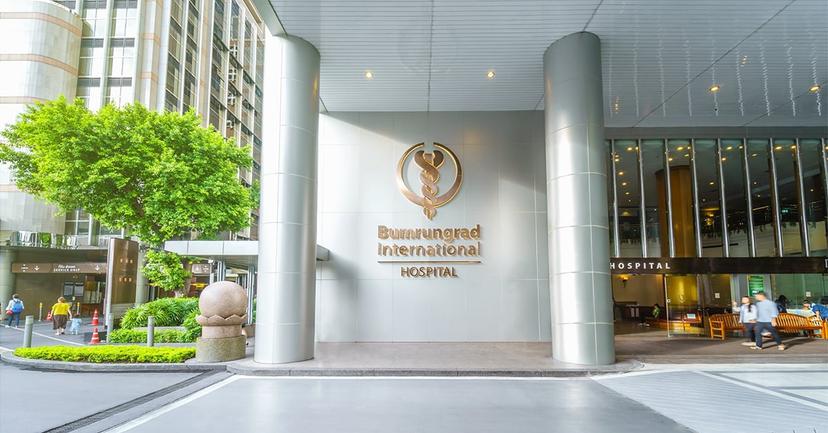
Top UAE Hospitals for Lymphoma Treatment
Lymphoma, a cancer that affects the lymphatic system, requires specialized
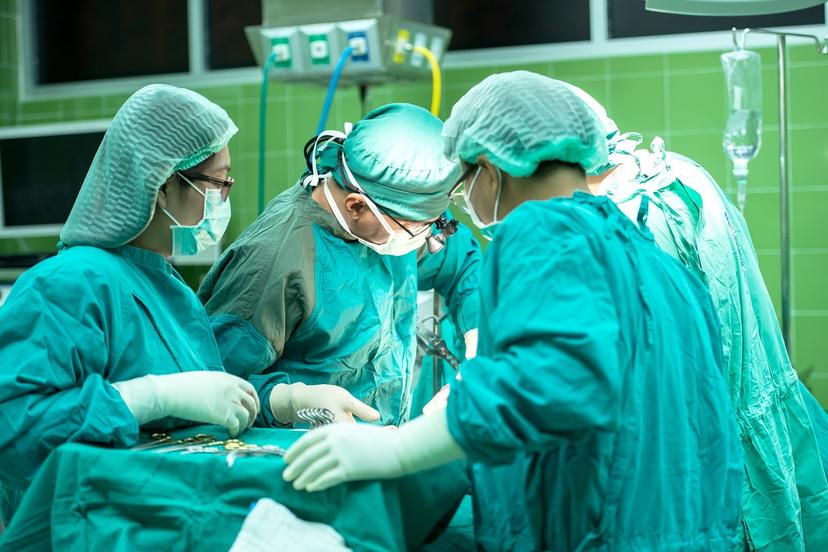
Top Hospitals in UAE for Bariatric Surgery
Obesity is a growing health concern worldwide, and the UAE
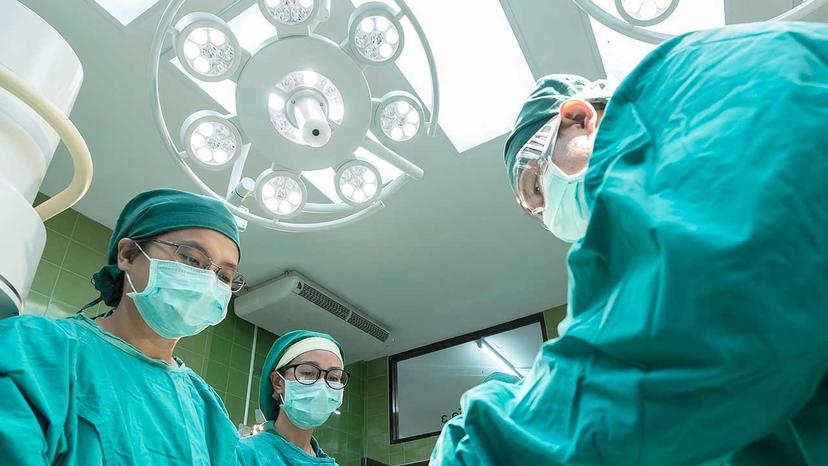
Top Hospitals in UAE for Cardiac Surgery
Cardiac surgery is a critical and life-saving medical procedure that
